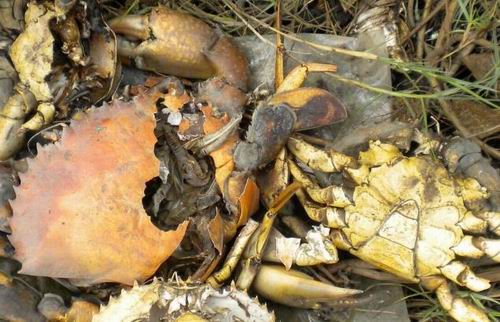
Introduction of infected shrimp seedlings and deteriorating environment should be blamed for the recent outbreak of virus diseases in prawn farms, say fisheries experts.
Death of shrimps and crabs has been reported from aquatic farms in the outskirts of the city. The infection, which has caused heavy losses to farmers, has mostly been reported from Vypeen, Kuzhipally, Edavanakad, Ezhikara, and Nayarambalam areas.
Death of farmed aquatic animals including shrimps due to White Spot Syndrome Virus has become a regular feature in the area.
It was in 1996 that the disease was first reported in the district, said B. Madhusoodana Kurup, Vice-Chancellor of the Kerala University of Fisheries and Ocean Studies. Since then, the disease has surfaced at intervals, said Dr. Kurup.
Major cause
K.K. Vijayan, Head of the Biotechnology Division of the Central Marine Fisheries Research Institute, Kochi, said that the introduction of infected seedlings was the major reason for the recurrence of the disease.
“Some prawn farmers from Kerala use seedlings which are rejected by aqua farms in Tamil Nadu and Andhra Pradesh because they are available at a cheap price.
“While farmers in neighbouring States go for disease-free seedlings, which are selected through scientific screening, their counterparts in Kerala settle for cheap ones, thereby inviting infections.”
“The aquatic system of Kerala is overloaded with pathogens. The farmers in neighbouring States also don’t allow much water exchange in their farming system. They refill the system with sterile water as a safeguard against diseases,” said Dr. Vijayan.
Contributory factor
According to Dr. Kurup, the reluctance of farmers to go for paddy cultivation in Pokkali fields too has contributed to the outbreak of the disease.
“If paddy is farmed then the waste that is accumulated in the system gets used up.
However, abandonment of paddy farming due to economic reasons in certain areas has piled up the load of pollutants and waste in the system; thus providing an ideal condition for pathogens to thrive. The viruses attack host animals with weak defense mechanism. Zoo planktons and phyto planktons, shrimps and crabs in the aquatic system get affected in the process,” he said.
M.S. Saju, Deputy Director, Fisheries, said the disease was reported from shrimp farms where farmers had introduced the seeds on their own.
Field reports stated that the disease was reported in shrimps of size up to 25cm indicating that they were introduced before the Fisheries department supplied the seeds. The department had supplied seeds for 550 hectares and the farming in these fields enjoyed insurance coverage, he said.





